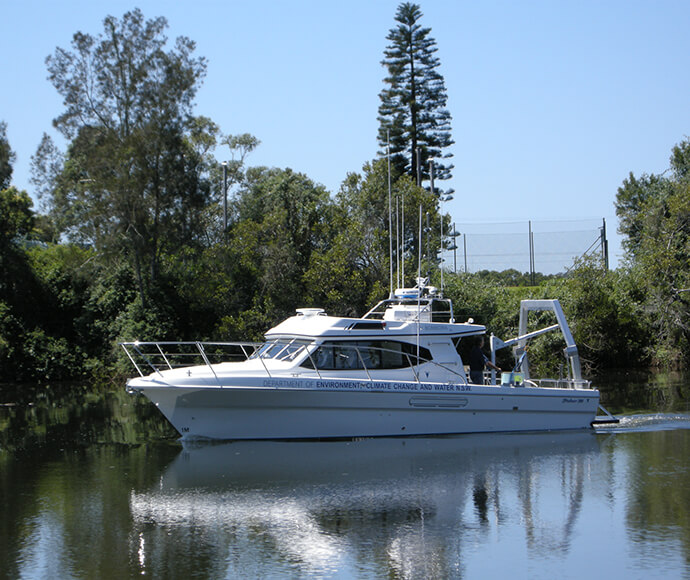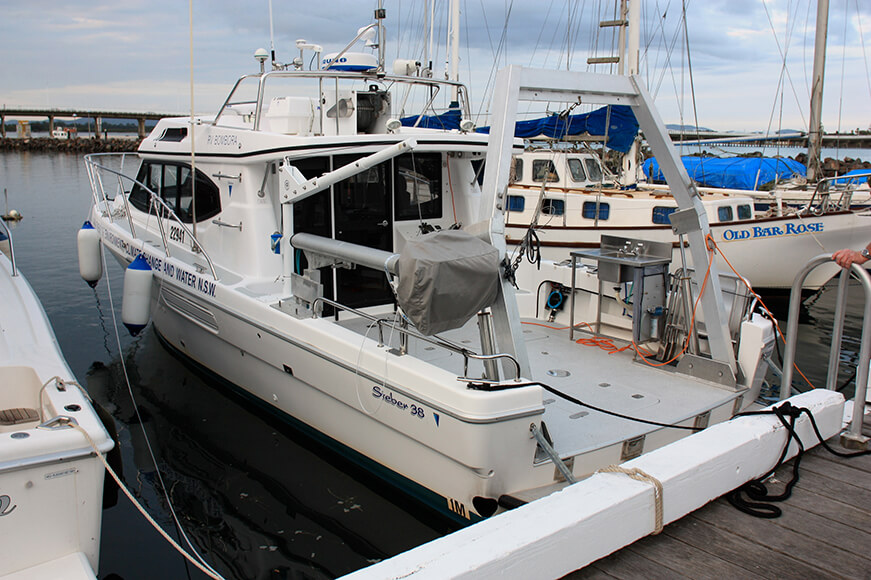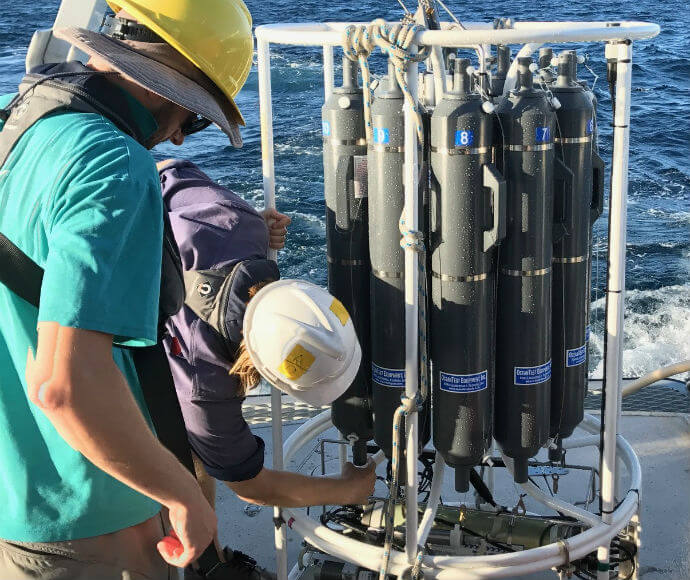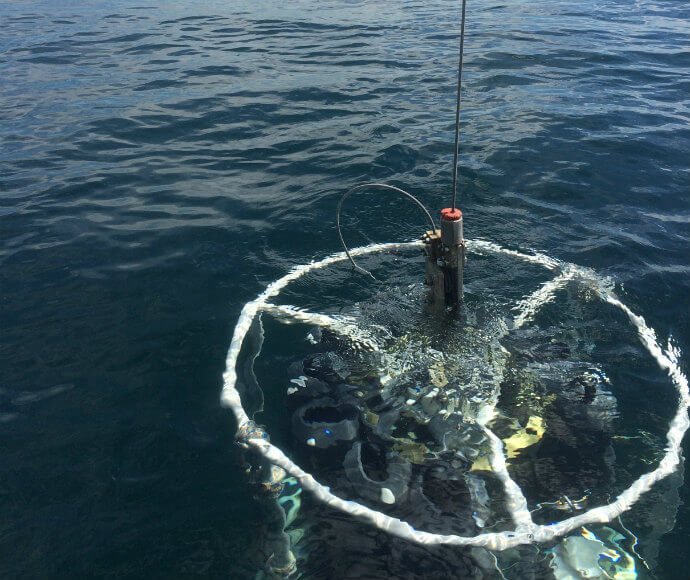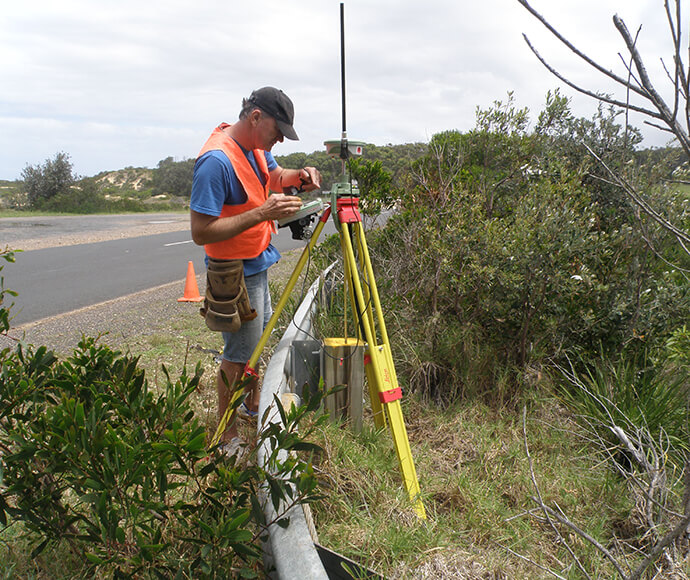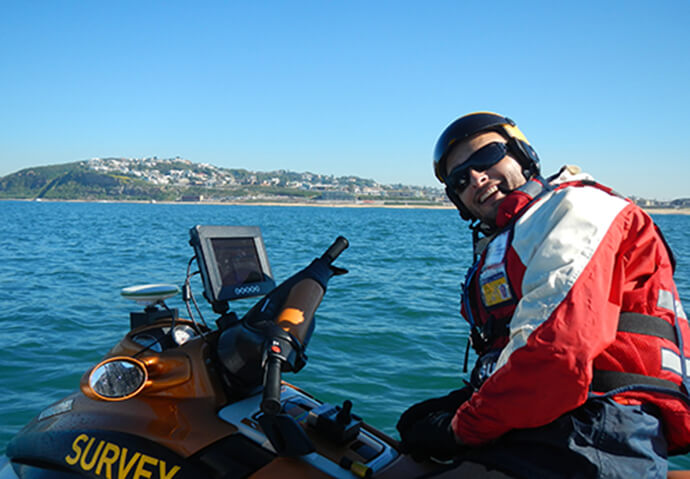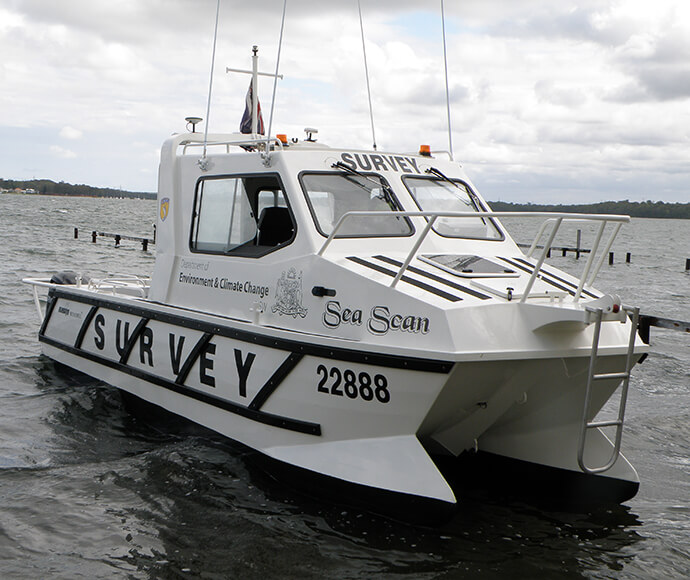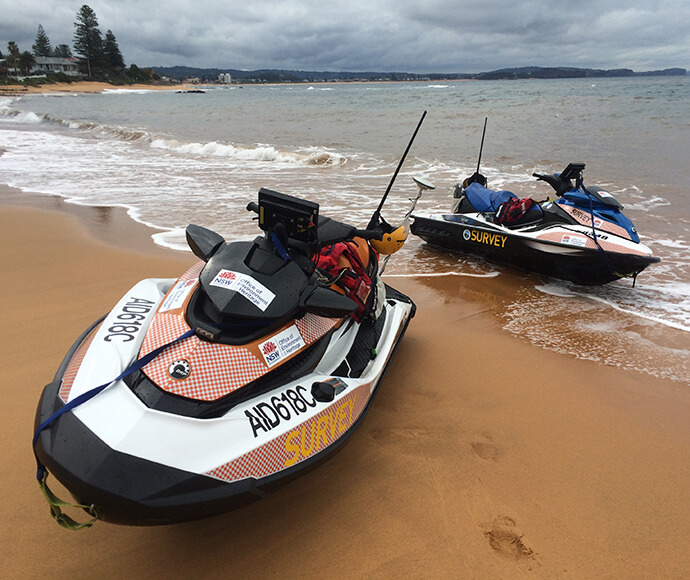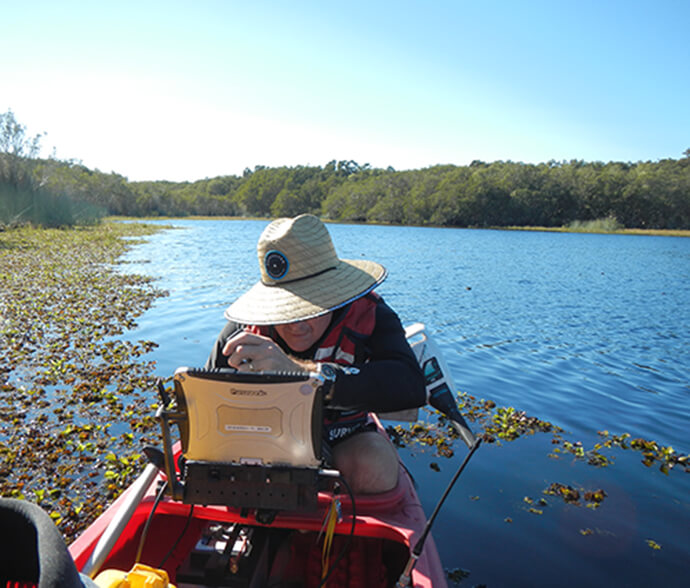RV Bombora
RV Bombora is our largest research vessel and was purpose built in 2009. We use it for our work in coastal lakes, estuaries, rivers and nearshore waters up to 100 nautical miles offshore. This enables us to work over large areas.
RV Bombora has the capacity to travel to Lord Howe Island, which is 350 nautical miles offshore, carry up to 10 people, and operate under extreme weather conditions.
'Bombora' means reef or underwater island in D’harawal language. D’harawal language is local to RV Bombora’s home port of Port Hacking.
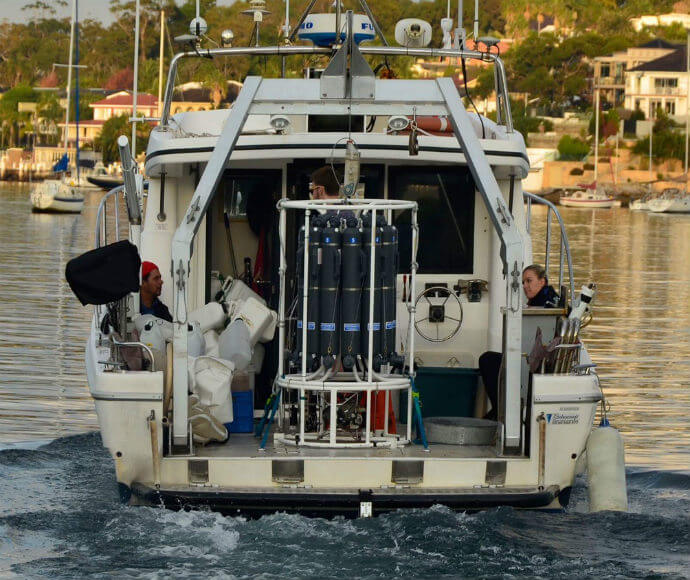
Seabed mapping
RV Bombora is equipped with state-of-the art instruments that we use to generate high-resolution maps of seabed topography (bathymetry) and seafloor habitat. The maps we generate are used to:
- better understand the distribution of soft sediment and reef habitats over the seabed
- document and monitor community composition and extent of specific sandy and reef-type habitats
- model sediment transport by waves, storms, tides and currents
- help assess the effectiveness of the marine park system and zoning.
We use a combination of sonar, towed underwater cameras, sediment samplers (grabs) and other oceanographic instruments to produce habitat maps. Video of the seabed is used to ‘ground-truth’ or validate the system and identify dominant seabed communities.
Understanding the types and distribution of sediments close to the coast enables us to model how they move on and off beaches, around headlands and along the shore. This research can then be used to predict how our coasts might change during storms such as east coast lows or into the future with rising sea levels.
So far, about 1,800 square kilometres of seabed along the NSW coast have been mapped using our sonar systems. Learn more about our offshore mapping research.
Ocean water quality
We also use RV Bombora to do oceanographic sampling using surface and profiling water quality meters, or conductivity-temperature-depth profilers. These instruments measure water currents using sound (acoustic Doppler current profilers) and sample water from depths of up to 200 metres.
We support other marine research with RV Bombora by deploying and retrieving ocean gliders, underwater robots, fish-listening stations and drogues. For more information go to our Ocean monitoring webpage.
Other research vessels and equipment
RV Seascan is dedicated to nearshore and estuarine hydrographic surveying to measure and describe coastal waters and land.
RV Badoo is a smaller research vessel used for estuary, coastal lake and nearshore water quality work. We also have other small runabout boats and an oyster punt that we use for estuary and lagoon surveys of water quality, plankton, plastics and sediments.
Our survey-capable jet skis, drones, all-terrain vehicle and laser scanners are used to survey beaches, lakes and estuaries. This work involves lasers, aerial imagery, multi-beam and single-beam sonars, and side-scan sonar to:
- assess coastal hazards
- monitor changes in shape and depth of estuary entrances
- provide information to assess threats to existing infrastructure
- provide baseline survey information for new infrastructure.
